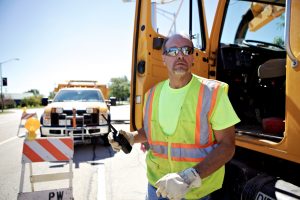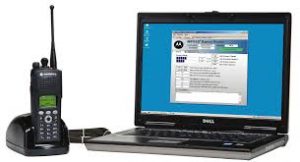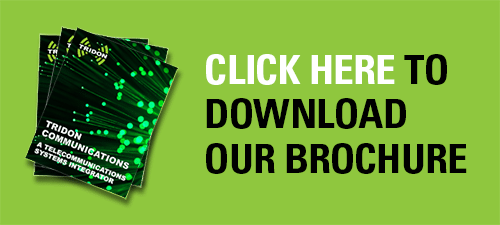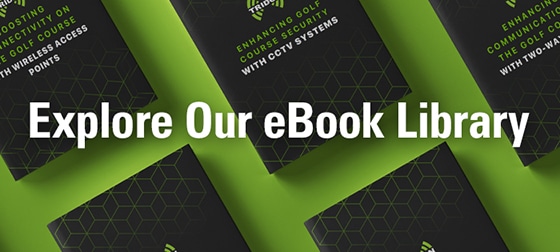Running into problems with your radio equipment?
Contact Us. We’re here to help.
Mobile and handheld radio equipment can be found in every industry in Alberta. You’ll find them on mine sites near Fort McMurray just as often as hospitality or transportation businesses based in Calgary and Edmonton. They offer loud, clear, and instant voice communication and fairly intuitive use.
That said, they are used in some rugged environments which can lead to a host of problems for two-way radio users. And, without some initial training, novice radio users can run into some operational challenges, as well.
We covered some of those problems in an earlier blog – feel free to give it a look. As always, you can Contact Us anytime with questions or repair requests.
In the meantime, here are five more common two-way radio problems, and what you can do about them.
Your Transmission Keeps Cutting Out
If you’re trying to relay an important message, having to repeat it multiple times can be a frustrating waste of time. Novice radios users often run into this problem, and fortunately, there may be an easy fix.
Often, people start speaking the second they hit the transmit (or PTT) button. BUT, doing this will result in the first couple of syllables or words getting cut off. You need to press, and hold, the transmit button for a couple of seconds before you start speaking (especially with digital radios). Side note: be sure to hold the transmit button throughout your transmission.
Also, be sure to hold the radio or microphone about three inches away from your mouth and speak into it at a regular volume. That will help ensure a consistent volume throughout your transmission.
If these don’t solve the problem, you may have a damaged antenna. Check for any bends, knocks, or tears. If you find any, bring your radio in for repairs. Replacing an antenna is a quick job for any radio technician, and it’s fairly affordable.
You Are Having (Unexpected) Coverage Issues
There is a range of issues that could cause this problem, but they usually have to do with the category of radio you are using. Here are a couple of potential sources:
Transmitting Through Concrete
If you’re using your handheld or mobile radio to communicate to someone in a building, the concrete, and steel used in the construction of that building can interfere with your transmission, especially if you’re using VHF radios. That category of radio is typically meant for outdoor use. If you’re communicating indoors, use UHF radios. The higher frequency band of UHF means signals can penetrate concrete and steel with less degradation.
Using Analog Over Long Distances
Unlike digital radios, analog radio transmissions get weaker and fuzzier if on radio user is working at the outer edges of the overage area. There are two ways to fix this coverage issue:
- Switch to digital radios. One of the many benefits of digital radios is their ability to maintain the same transmission quality throughout the coverage invest in repeaters. A repeater is effectively a signal booster that takes your radio signal and re-transmits it farther than it could go on its own. There are repeaters to support analog and digital radios, and you can rent them from Tridon.
You’re Having Issues Charging Your Battery
This might be one of the most common problems radio users have shared with us.
When you charge your radio’s battery for the first time, you may notice a steady orange light. If you see that light, it means your battery has entered a mode called ‘reconditioning’. This is essentially a maintenance cycle designed to ensure you get the most life out of your battery. It drains your battery completely before charging it back up to 100%. Reconditioning takes around twelve hours, so it can be a bit annoying if you don’t know what’s going on.
Some radio users will try using the battery before the reconditioning cycle is finished. Doing this will leave you with a battery that isn’t completely charged, which means you’ll be heading back to the charger for a replacement before long. You need to let this cycle finish (signified by a steady green light).
This reconditioning cycle will only occur the first time you charge your battery (or when you perform planned maintenance on them, so it won’t be a huge interruption to your project.
You can stop the reconditioning cycle if you need your battery in a hurry. To do this on Motorola chargers, simply insert the battery normally, quickly remove it, then re-insert it. The charger will switch to rapid charging mode, and you will get your battery back sooner.
Your Earpieces Keep Falling Out
If members of your team are complaining about uncomfortable earpieces or earpieces that keep falling out, you can swap them out with units that are a better fit without sacrificing audio quality.
This may not seem like a big problem, but if you manage a security team that uses earpieces for discrete listening, you don’t want them focused on the poor fit of the equipment; you want them to hear the transmission the first time so they can respond accordingly.
Your Headset Isn’t Getting Sound
This is usually an easy problem to solve.
You need to connect your headset to your radio before you turn it on, not after. If doing this doesn’t solve the problem, there may be an issue with the cable or at the connection point. In that case, bring your radio and headset to Tridon for service.
Getting Started
Mobile and handheld radios are designed to be intuitive so your team can focus on their project. A bit of training and some hands-on experience, and your team will be able to troubleshoot a great many problems.
That said, more complicated problems can crop up, and sometimes maintenance by expert radio technicians may be required. So, if you’re looking for a bit of radio training, or if you need repair services in a hurry, Contact Us. Our Account Managers and Service Technicians are here to help.
Tridon is a full solution Telecom Systems Integrator with CSA certification and licensed by APEGA. Our Engineering, Service and Tower Divisions collaborate with customers to build engineered solutions including communications systems design, tower inspections, and co-location, wireless broadband, fiber optic cabling, site security, and two-way radio communication.






